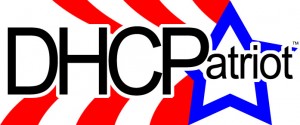To: All FNGi Customers
Re: Coronavirus (COVID-19) Readiness/Planning
With the current uncertainties, I want you and all of our valued clients to be certain and confident that First Network Group is here to serve your needs and those of your customers. To that end, I want to update you on our status and planning.
Please know that while all things Coronavirus (COVID-19) remain fluid and subject to change, at the present time, our departments remain open on our regular 24/7 schedules, we are actively monitoring and managing your network and server infrastructure. All DHCPatriot work continues as normal in upgrades and support. As well as providing end-user technical support, call center service, and Lawful Intercepts to your customers, and we stand ready to be there for you.
We have escalated internal policies and procedures that minimize the risk of exposure to our employees and their families as we are confident that you have too. Departments that are well suited to work-at-home have already begun the transition as practicable.
In addition and at this juncture, we have no plans to close our offices, but if the need for that arises we will also migrate all call center services to a telecommuting model. That transition should be seamless for you and your customers.
Again, we see no need for those alternate operations at this time.
We are honored to be at your service, and as always, feel free to call or write as questions arise.
Respectfully,
Stephen C. Walter
Founder, President & CEO


